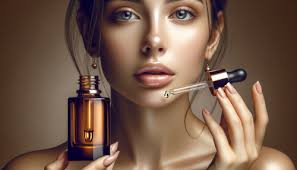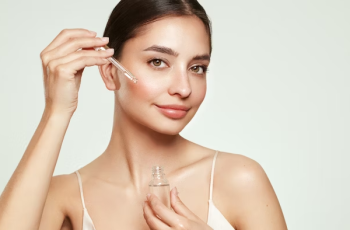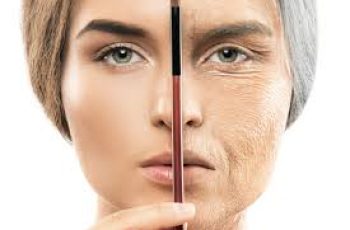
.webp)
.webp)
.webp)
Glycosaminoglycans (GAGs) in Skin and Skincare: The Secret to Plump, Youthful Skin
.webp)
.webp)
If you’ve ever wondered what gives skin its smooth, dewy, and bouncy appearance, the answer might lie in something called glycosaminoglycans, or GAGs.
.webp)
.webp)
.webp)
These powerful sugar molecules are naturally found in your skin, and they play a crucial role in keeping it hydrated, firm, and healthy.
.webp)
.webp)
Today, we’ll explore what GAGs are, why they’re important, how they relate to popular beauty trends like “jello skin,” and which skincare products are packed with these magical molecules.
.webp)
.webp)
.webp)
What Are Glycosaminoglycans (GAGs)?
.webp)
.webp)
Glycosaminoglycans (GAGs) are long chains of sugar molecules that exist in your skin and other parts of your body.
.webp)
.webp)
.webp)
They are a type of polysaccharide, meaning they’re made up of repeating sugar units linked together in long chains.
.webp)
.webp)
These chains bind to core proteins, forming compounds called proteoglycans, which serve as structural components of your skin.
.webp)
.webp)
.webp)
Think of them like a sponge made of sugar—able to soak up and hold large amounts of water.
.webp)
.webp)
This unique property is what helps your skin stay hydrated, soft, and plump.
.webp)
.webp)
.webp)
The Role of GAGs in the Skin
.webp)
.webp)
GAGs do much more than hydrate your skin. They’re a key part of the extracellular matrix (ECM), the structure that supports your skin cells.
.webp)
.webp)
.webp)
Here’s what GAGs do in the skin:
.webp)
.webp)
Bind and retain water to keep skin hydrated
.webp)
.webp)
.webp)
Help balance salt and water levels
.webp)
.webp)
Create a structure for skin cells to attach to
.webp)
.webp)
.webp)
Support fibroblast function and movement
.webp)
.webp)
Allow cell-to-cell communication through signaling molecules like growth factors and exosomes
.webp)
.webp)
.webp)
Without GAGs, your skin would lose structure, elasticity, and hydration, leading to a dull and aged appearance.
.webp)
.webp)
Meet the Most Important GAGs in Skincare
.webp)
.webp)
.webp)
There are several types of GAGs found in the skin. Each one plays a specific role in skin health:
.webp)
.webp)
1. Hyaluronic Acid (HA)
.webp)
.webp)
.webp)
Found in the dermis
.webp)
.webp)
Known for its powerful water-binding ability
.webp)
.webp)
.webp)
Provides volume, plumpness, and enhances skin penetration of products
.webp)
.webp)
2. Heparan Sulfate (HS)
.webp)
.webp)
.webp)
Helps skin cells respond to growth factors
Decreases with age, reducing skin’s ability to repair and regenerate
3. Chondroitin Sulfate
Helps maintain hydration and structure in the skin
Also found in cartilage, providing resilience
4. Dermatan Sulfate
Involved in wound healing and skin elasticity
Replaces chondroitin sulfate in certain tissues
5. Keratan Sulfate
Found in the eyes and cartilage
Believed to support hydration and elasticity in skin
6. Decorin
A proteoglycan that helps collagen fibers organize
Declines with age, contributing to skin fragility
Why Are GAGs Trending in Beauty?
If you’ve been scrolling through TikTok or Instagram, you’ve probably heard about “jello skin.”
This term describes skin that is so plump and firm, it resembles the bounce and jiggle of jello.
This look is largely due to a high concentration of hydrated GAGs in the skin—especially hyaluronic acid.
“Glass skin” and “jello skin” are both visual signs of youthful, healthy skin filled with moisture-retaining molecules like GAGs.
GAGs in Aging Skin: What Changes?
As we age, our skin naturally loses its supply of glycosaminoglycans.
Hyaluronic acid levels drop significantly, which leads to dryness, wrinkles, and a loss of volume.
Studies show that aged skin has:
Decreased hyaluronic acid, Reduced heparan sulfate, Lower levels of total sulfated GAGs
Increased levels of dermatan sulfate and keratan sulfate (especially in photoaged skin)
This imbalance reduces hydration and weakens skin structure.
GAGs in Cosmetic Procedures
If you’ve ever received a dermal filler, then you’ve already benefited from a GAG—specifically hyaluronic acid.
Popular dermal fillers like:
Restylane, Juvederm, Voluma, RHA, Versa, Belotero…are made from crosslinked hyaluronic acid.
These injectable fillers add volume, smooth wrinkles, and restore youthful contours to the face.
HA in fillers is thicker and designed to stay in place, giving long-lasting results.
How GAGs Help Other Ingredients Work Better
One often overlooked benefit of GAGs like hyaluronic acid is their ability to improve the absorption of other skincare ingredients.
By increasing hydration in the outer layers of the skin, GAGs create a better environment for active ingredients to penetrate deeper.
This makes your entire skincare routine more effective.
GAGs in Skincare Products
You’ll find glycosaminoglycans in many moisturizers, serums, and anti-aging products.
Common GAGs in skincare: Hyaluronic acid (HA), Heparan sulfate (HS)
These are the most widely used because of their proven ability to hydrate and support skin regeneration.
Top Skincare Products With GAGs
Dermatologist-Recommended HA Serums:
Alastin HA Immerse Serum – Hydrates deeply and boosts skin moisture levels
Skinceuticals HA Intensifier – Increases skin’s hyaluronic acid by up to 30%
PCA Skin Hyaluronic Acid Boosting Serum – Supports internal HA production
Filorga HYDRA-HYAL – A plumping concentrate with multiple HA types
More Great HA & HS Products:
ISDIN Hyaluronic Concentrate – Lightweight serum that deeply hydrates
Neocutis HYALIS+ Intensive Hydrating Serum – Contains pure HA for smooth skin
Vichy Aqualia Thermal Rich Cream – Affordable and nourishing hydration
CeraVe Hydrating Hyaluronic Acid Serum – Budget-friendly and dermatologist-tested
ClarityRx Daily Dose of Water Serum – Clean formula for intense hydration
SENTÉ Dermal Repair Cream – Contains heparan sulfate analogs to support aging skin
These products combine HA or HS with other beneficial ingredients to support barrier function and moisture retention.
How to Choose GAGs for Your Skin Type
Not every GAG-containing product is right for every skin type.
For oily skin, choose lightweight HA serums that absorb quickly.
For dry or aging skin, opt for richer creams or multiple molecular weight HA formulas.
If you have sensitive or reactive skin, consider products with heparan sulfate, which improves communication between skin cells and supports barrier repair.
Not All HA Is Created Equal
You may notice that some products list “low molecular weight HA” or “multi-molecular HA.”
These terms refer to the size of the HA molecule, which affects how deep it can penetrate into the skin.
High molecular weight HA stays on the surface and hydrates the top layer.
Low molecular weight HA penetrates deeper for longer-lasting hydration.
Products that contain a blend of HA sizes tend to be more effective and versatile.
What You Should Know About Heparan Sulfate
Heparan sulfate plays a major role in cell communication.
It ensures that growth factors and other signaling molecules can move through the skin effectively.
Heparan sulfate also protects growth factors from breaking down too early, making skin cells more responsive and active.
This is especially important in aged skin, where the ability to “hear” and respond to signals is weakened.
Final Thoughts: Why GAGs Matter
Glycosaminoglycans are one of the most essential molecules in your skin.
They hold water, support structure, enhance communication, and allow your skincare to work better.
Adding products with hyaluronic acid or heparan sulfate into your routine can dramatically improve hydration, texture, and overall skin health.
Whether you’re chasing the “jello skin” look or simply want healthier, more youthful skin, GAGs are a must-have.
Pro Tip: Take the Baumann Skin Type Quiz to find out which GAG-containing products work best for your specific skin needs.



